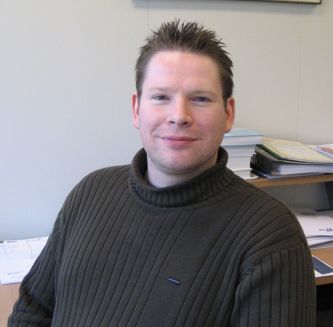Densely Integrated Microring-Resonator Based Components for Fiber-to-the -home applications
Promotion date: 11 April 2007
| I participated in two projects; both projects dealing with Fibre-to-the-home issues. A lot of people have fast internet connections using ADSL via telephone lines or cable. At present, however, bitrates of about 20 Mbit/s are close to the practical limit because of the limitations of transferring large sets of data over a certain distance. A solution can be found by replacing the electrical wires with glass fiber. The glass fiber runs all the way up to the home and where the optical signal is converted into an electrical signal. But for the advantage of greater speed, nothing changes for the home user. Somewhere in the home a kind of box does the trick. The problem is that at present optical components are still relatively expensive for a home user. In my thesis I describe several optical components that can be produced at low cost but that nonetheless have a lot of functionality. |
What was your specific part in all this?
I worked on two different main topics: a ‘transceiver’ for the home user (the component receiving en transmitting optical signals). The transceiver can transmit or receive data on multiple wavelengths (colours). To send more information across an optical cable, various colours are sent simultaneously. Also different services (kinds of data) can be sent or received on different wavelengths.
We developed an integrated optical transceiver chip based on microring resonators. The chip filters the incoming colours and sends only one colour to the receiver where it is converted into an electrical signal. At the end of the project we also did something extra: with the microring resonators that we developed we made an optical add-drop multiplexer (OADM). This OADM uses multiple resonators that can be tuned to either add or drop a certain colour from an optical fiber.
This was our share in the NAIS project (Next generation Active Integrated optic Sub-systems). In this European project a lot of parties were involved. The outcome is the first half of the components discussed in my thesis.
After two years the project ended successfully and I started working in a newly formed national project called Broadband Photonics (Freeband). This project perfectly matched with what I had done in the first two years.
In what way?
It also dealt with integrated optics and the filtering (dropping and adding) of optical signals using microring resonators as we had done in the NAIS project, although not in a transceiver, but in a network. Within this project a wavelength router was developed. This router is a more complex variant of the OADM in that it can drop multiple wavelengths to a certain output in stead of just a single wavelength per output in case of the OADM.
What are you going to do next?
The thing about my research is that it involved a lot of engineering and a lot of improving on existing technologies which generally does not lead to spectacular new insights or interesting physics. In the beginning this made publishing quite hard because we were behind on technology and design knowledge and could therefore not show results that had not already been obtained by others. At present however we have a technology that performs very well and are able to make devices that are difficult to make for other groups. We currently even have several demonstrators that we show at conferences and are thinking of starting a company, partially based on the results obtained from my work.
In the mean time I am doing a postdoc in the same group, waiting for the outcome of the viability of the business plan we are drawing up.
For the summary of the thesis, click here
Voor de samenvatting van het proefschrift, click hier

